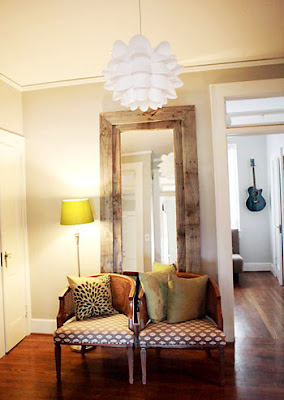One idea I had was inspired by the Five Doors North restaurant located on Yonge Street not far from our house. I think an eclectic collection of doors painted in different colours would look great, but would it be possible to build this into the rest of the basement design? Would it be too clown/kid looking?
We could keep with the same door theme, but paint them a more muted colour (shades of gray?). Mirror doors are another thought, and they would probably make the basement seem bigger, but I worry about them getting broken by toys, or constantly being covered in kid hand prints. This is probably something that I will make myself, preferably using reclaimed materials, so the options are almost endless.
 Source: Logan Square Kitchen
Source: Logan Square Kitchen
 Source: Spazzi
Source: Spazzi
 Source: Gliding Door Company
Source: Gliding Door Company
 Source: Momento Italia
Source: Momento Italia
























